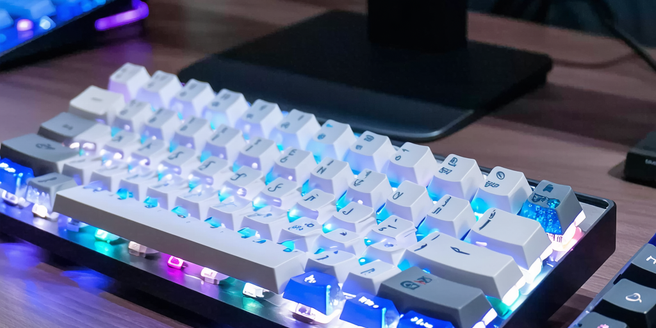Customizable Mechanical Keyboards For Personalization

Understanding Mechanical Keyboards: A Brief Overview
Mechanical keyboards are prized for their tactile feedback and durability, setting them apart from membrane keyboards. Unlike membrane designs, mechanical keyboards use individual switches for each key, providing distinct characteristics and responses. These switches can vary in terms of actuation force, travel distance, and sound, offering a tailored typing experience. Users appreciate the longevity of these keyboards, as they’re built to withstand heavy use, making them an ideal choice for both gaming and professional typing. The appeal of these keyboards often lies in their customizability, allowing enthusiasts to modify key components. From switches to keycaps and mounting plates, almost every part of a mechanical keyboard can be personalized to match the user’s preferences, enhancing both functionality and aesthetics.
Benefits of Customizable Keyboards for Typists and Gamers
Customizable keyboards provide numerous advantages for both typists and gamers. Typists benefit from the ability to select switches that match their typing style, whether they prefer soft, quiet keys or stronger, tactile responses. This customization can reduce finger fatigue and improve typing speed. Gamers, on the other hand, often look for responsive and reliable inputs, where individual preferences for key feel can lead to quicker, more precise actions in-game. The option to swap out keycaps allows users to choose designs that enhance comfort and visibility. Over time, this personalization leads to a more enjoyable and efficient experience, encouraging creativity and investment in one’s personal setup. Whether for competitive gaming or professional work, these keyboards support both comfort and performance.
Key Components to Customize in Mechanical Keyboards
When diving into the world of mechanical keyboards, the array of customizable components can seem overwhelming, but each modification is an opportunity to tailor the keyboard to your unique needs. Key switches are a popular starting point, with options ranging from clicky to linear types, affecting both the feel and sound of typing. Next, keycaps can be changed for aesthetics and functionality, choosing materials like ABS or PBT, and different profiles that influence typing comfort. The stabilizers, which steady larger keys, can also be modified to enhance the typing experience. Lastly, the keyboard’s case and PCB can be swapped or enhanced for better durability or visual appeal, allowing for a physical foundation that mirrors personal style. These customizations can convert a simple tool into something both functional and uniquely individual.
How to Choose the Right Switches for Your Typing Style
Selecting the right switches for your typing style is crucial for achieving an optimal typing or gaming experience on your mechanical keyboard. Begin by identifying your preferences for tactile feedback and noise levels. If you enjoy a pronounced ‘click’ with each keypress, clicky switches like Cherry MX Blue may suit you. For those who prefer a quieter typing session, linear switches such as Cherry MX Red offer smooth key presses without tactile feedback. Tactile switches, like Cherry MX Brown, offer a middle ground, providing a bump on actuation without the click sound. It’s advisable to test different switches on a sample board to truly understand their feel. Additionally, consider the actuation force; lighter switches are generally best for fast typing, while heavier ones can help prevent accidental key presses.
Exploring Aesthetic Customizations: Keycaps and Beyond
Aesthetic customizations are where mechanical keyboards truly shine, allowing users to express their individuality. The most common alteration is swapping out keycaps, which come in a multitude of designs, colors, and materials such as ABS and PBT. These changes not only enhance the visual appeal but can also improve typing comfort depending on the keycap profile selected. Beyond keycaps, enthusiasts can modify the backlighting with custom colors or effects, aligning with personal or desk setup aesthetics. Decorative elements like artisan keycaps add personality and uniqueness, while custom cables, often braided and colored, complete the look. Many also integrate themed desk mats or wrist rests to create a cohesive style. Such modifications turn a utilitarian device into a reflection of personal taste and creativity.
Tips for Building Your Own Personalized Keyboard Setup
Building a personalized keyboard setup is an exciting endeavor that allows for full creative control over the typing experience. Start with selecting the right barebones kit, which includes the case and PCB. Choose the size of the keyboard that fits your needs, whether full-sized or compact. Research and select the switches that match your typing style; testing switch samplers can be invaluable here. Assemble the keyboard by installing the switches onto the PCB, and don’t forget to loop the stabilizers for a smooth press on larger keys. Choose keycaps that both appeal to your aesthetic preferences and provide comfort. Consider additional personalization through custom cables and lighting effects. Lastly, take your time and enjoy the build process—each step is a chance to learn and fine-tune your keyboard’s performance and look.